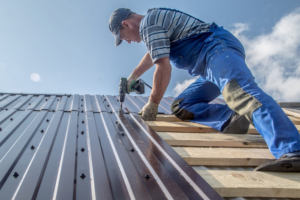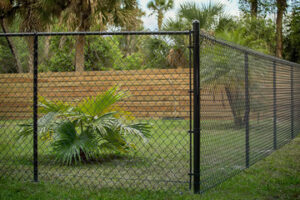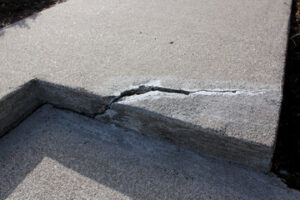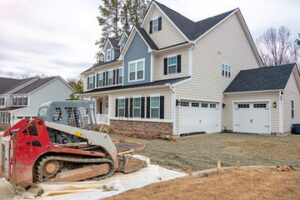Insulation removal vacuums are specialized machines that use suction to remove insulation from walls, ceilings and floors. The insulated material is then discharged into recovery bags for proper disposal.
Old or damaged insulation can pose a health risk and structural threat for the home. Replacing it with new, fresh insulation will increase indoor air quality and energy efficiency for the home or business. Contact Perth Insulation Remover now!
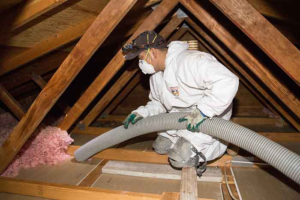
Insulation is a key component of a building’s structure and indoor environment. It protects against extreme temperatures, reduces energy costs, and eliminates noise. However, the effectiveness of insulation can be compromised by a variety of issues, including damage and mold. Mold growth in insulation can cause severe damage to a building’s structure, create musty odors, and lower a home’s energy efficiency. Addressing moisture and water problems, improving ventilation and air circulation, regular inspection, and removing and replacing damaged insulation can prevent mold growth.
Insulation and drywall are often the first things to show signs of mold, with stains, discoloration, or musty odors. Moldy insulation is also a health hazard, posing respiratory and allergic symptoms in residents. It can release mycotoxins into the air that cause harmful side effects and allergic reactions. Moldy insulation must be removed and replaced by a professional in order to eliminate mold spores from the air.
The type of insulation a homeowner chooses to install in their home is important for mold prevention. Insulation made from fiberglass, cellulose, and recycled newspaper is generally resistant to mold growth. However, it is still possible for mold to grow in the attic or crawl space due to leaks, condensation, and other factors.
If the mold is limited to the surface of the insulation, it may be able to be cleaned with household cleaners. However, it is essential to wear a N95 or P100 respirator mask, gloves, and protective eyewear when attempting to clean moldy insulation. If the mold is penetrating deep into the fiberglass batts, cellulose, or blown-in insulation, it will likely need to be completely removed and replaced.
Moldy insulation is a significant health and safety risk for homeowners, so it must be removed quickly to avoid exposure and other adverse effects. In addition, it can dramatically decrease the insulation’s ability to keep a home comfortable, driving up energy costs. To learn more about how mold can impact your home’s insulation, contact Indiana Mold Remediation. We can answer your questions and provide a free mold inspection of your home or business.
Pest Infestation
Whether pests are entering a building to feed or shelter, their presence presents both health and safety risks for people who work in the space. They carry bacteria in their fur, droppings, saliva and feet that can lead to negative health implications such as illness and even death. Detecting pests early and eliminating them quickly can prevent this from occurring.
Signs of a pest infestation include gnaw marks, scurrying sounds or the smell of rotting food. Other signs to look for include insect or rodent droppings and a buildup of dirt or sawdust where pests have been burrowing or nesting. A sudden increase in the number of pests in an area or a noticeable loss in overall building cleanliness are also good indicators of pest problems.
In addition to visual evidence, pest infestations can be detected through auditory cues, such as scratching and scurrying noises, especially at night. These signs indicate that pests are hiding in the walls or attic, and are likely breeding or feeding in those locations.
Regular inspections of a building can identify the most common entry points for pests and help prevent them from infesting. These include cracks, crevices and gaps that are large enough for pests such as mice, cockroaches, ants or rats to slip through. These areas should be sealed with caulk or weatherstripping. Additionally, it is important to keep garbage and other materials contained in properly-sealed containers.
It is also important to regularly inspect the outdoor areas of a property for signs of pest infestation, such as ant hills or termite mud tubes. It is also crucial to trim back bushes and clear away debris from the property.
It is a good idea to schedule regular pest prevention services with a reputable pest control company. These services can help to reduce the risk of infestation by providing a professional evaluation and implementing both chemical and non-chemical preventive methods to stop pests from infesting buildings. These services can be as simple as examining the premises for cracks, gaps and other potential entry points and as complex as a comprehensive integrated pest management program.
Poor Energy Efficiency
Over time, insulation loses its ability to resist the flow of heat or cold, resulting in high energy bills and a less comfortable home. Replacing outdated insulation with new materials is a cost-effective home improvement that can lead to reduced heating and cooling costs. It is often part of a larger remodeling project that may require access to walls or attics.
One of the best ways to ensure your existing insulation is effective is to replace caulk and weather stripping every two years, which helps prevent air leaks and reduces drafts. It is also a good idea to inspect your attic for signs of insulation damage or wear and tear, which can lead to poor air quality, health issues, and higher energy bills. Adding new insulation can be a large job, and hiring a professional company to remove the old insulation and replace it with the right materials is a smart move that will protect your home from mold, pest infestation, and other concerns while ensuring its overall efficiency.
If the existing insulation is infested with pests or contaminated by rodent feces, it is often necessary to remove it. In addition, the presence of asbestos could make removal more difficult and dangerous. However, the signs of poor energy efficiency and higher than normal energy bills are clear indicators that it’s time to remove the old insulation and upgrade to a more efficient option.
During the process of insulation removal, it is important to be aware of the possible hazards that can occur, including the need for proper safety gear. Gloves are a must to protect hands from sharp objects and pests, and eye protection is advisable to avoid irritation from dust or other particles. It is also a good idea to cover surfaces that will not be exposed to the insulation material, such as floors or furniture.
After removing the old insulation, it must be properly disposed of. This can be done by contacting waste management or recycling services. The type of insulation and local disposal regulations can affect the costs associated with disposing of the old material.
Remodeling Projects
When renovating or repairing the home, it’s an ideal time to upgrade and add new insulation for better energy efficiency and comfort. Insulation damage from pest infestations, water leaks, and outdated materials necessitates replacement. This type of remodeling also requires a careful inspection to check for existing problems, including water damage and structural integrity.
When it comes to insulation, there are several options available for homeowners that include spray foam, cellulose, and rockwool. The type of material chosen will determine the appropriate tools and methods for removal. The type of home also impacts the cost as larger homes will require more labor and materials, resulting in higher costs. Finally, accessibility to attics or crawl spaces can play a role in the cost of removal and installation as access may need to be modified.
During the removal process, it’s important to work in a well-ventilated area to reduce exposure to dust and other particles that can affect respiratory health. Using plastic sheeting or tarps to seal off areas of the home will help contain any dust or debris and prevent it from spreading elsewhere. Wearing a mask or respirator and covering up skin with long-sleeved clothes will also help protect against irritation. Lastly, using a vacuum with a HEPA filter for cleaning can minimize dust and airborne particles.
Once the old insulation has been removed, it’s vital to dispose of it properly. Consult your local waste management facility for proper disposal guidelines. Some types of insulation require special handling and disposal procedures, while others can be thrown in with normal trash. The amount of insulation removed will also impact the overall cost as some require a large dumpster for collection and others need to be separated out for recycling.
While it’s possible to remove your own insulation, it is often recommended that you hire a professional insulation contractor. These professionals have the expertise and equipment needed to handle the job safely, efficiently, and correctly. Their experience with a variety of insulation types and installations will allow them to identify the best solution for your home.
